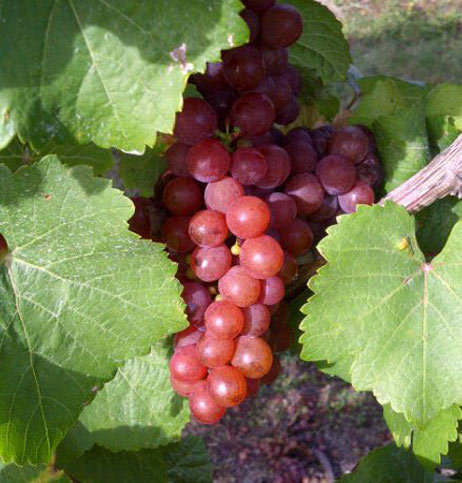One of many grape varieties with a hard to pronounce name (you will meet more during the remainder of this A-Z!). Pronounced “Guh-VERTZ-tra-mean-er” I tend to just call it “Gewürz” it’s easier.
I think of this grape as being like marmite – now obviously it doesn’t taste like marmite, (that would be horrific in a wine!), but it does divide consumers just as much – quite literally some love it and others hate it. I am very firmly in the ‘love it’ camp.
(A very brief) History

Although sounding German the grape is believed to originate in the Alto-Adige region of Northern Italy, where it went by the name Traminer. Traminer mutates very easily and one such mutation into a musqué (aromatic) version with dark pink berries resulted in the prefix ‘Gewürz’ meaning ‘perfumed’ being adopted in Alsace in the late 1800’s. Today the grape remains relatively scarce in terms of plantings globally, its heartland remains Alsace where the finest examples can be found. There are also terrific wines to be found in New Zealand, Italy’s Alto Adige and more recently in Chile and Canada.
About the grape
I will talk more about the taste in a minute, but in terms of its main characteristics, the main thing to note is this is not the easiest of grapes to grow or handle. It has a tendency to build up very high levels of sugars which results both in high alcohols but also lower acidity, and over-ripe grapes can produce wines which tend to flabbiness (see my post on acidity as to why this is not a good thing). It also needs careful handling in the winery to avoid over extraction of the skins as this can impart a slight bitterness in the final wine. Because of its tendency to accumulate sugars quickly, it is often used (to great effect) in the production of sweet wines: in particular late harvest wines (you may see Vendange Tardive on labels) – where grapes are left to over-ripen and shrivel on the vine and the even sweeter Sélection de Grains Nobles (usually affected by Noble Rot – a good thing I promise).
With the exception of top Alsace wines and the sweet versions (which age well), I’d tend to drink bottles within a few years of purchase to retain the vibrant aromatics and before they risk becoming flabby.
Top Tip: Gewürztraminer is a white variety, but as a result of the berries having a deeply coloured pink skin, the wine often has a pink tinge to it. Its not a fault, it’s meant to look like that, and no it’s not a rosé.
What does it taste like?
Let’s start by saying this is not a shy grape. If you like to swirl a glass and hunt for aromas then this may not be the grape for you! Its big, brassy and unapologetic, all lychee and rose on the nose and a palate which continues the assault on the senses. It is hugely aromatic, with oodles of spice, often rich and voluptuous (with a tendency to oilyness). Acidity can also be a problem in poorer examples, but when producers get it right, it can be spectacular. Usually off-dry, the drier versions are terrific, tricking your senses into expecting a non-existent sweetness. Equally spectacular are the dessert (sweet) wines if you can find them.
Top tip: I’d look to match dry and off-dry Gewürztraminer with lightly spiced Asian food but be careful of too much spice as high alcohols will only accentuate the chilli heat!

Its pretty clear from this blog I am a serious fan of this variety, possibly because it is so under-appreciated, but also because it does offer great value for money, the best ones available at a fraction of the price of a Burgundy.
If you are interested in trying a Gewürztraminer (go on I dare you), you can get a bottle from Domaine Paul Blanck for less than £15 from Waitrose.
I’d recommend the following producers too if you can find them:
From Alsace: Domaine Marcel Deiss, Hugel, Zind-Humbrecht and Cave de Hunawihr.
From Italy: Franz Haas in the Alto-Adige.
New Zealand is my go-to for Alsace style wines: look out for Framingham and Spy Valley. Lani also produce a very drinkable version.
That wraps up Gewürztraminer, I really hope I’ve encouraged you to experiment with this grape, I’m not guaranteeing you will like it, but you will remember the experience!
Next up… H is for Hungarian wine
